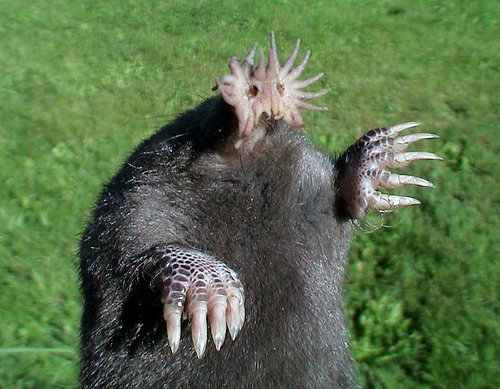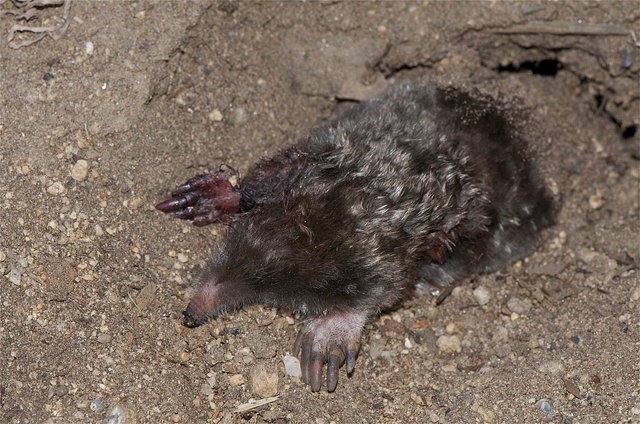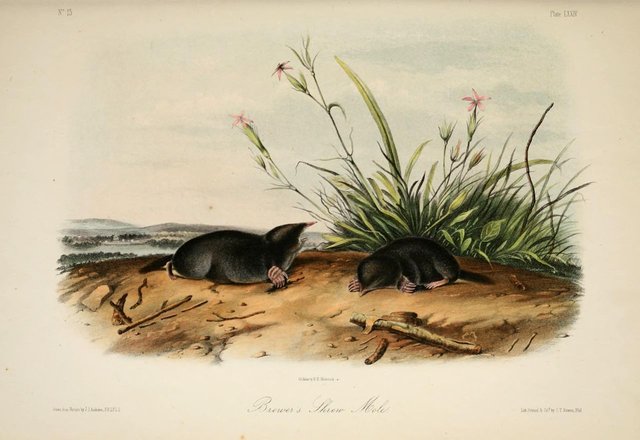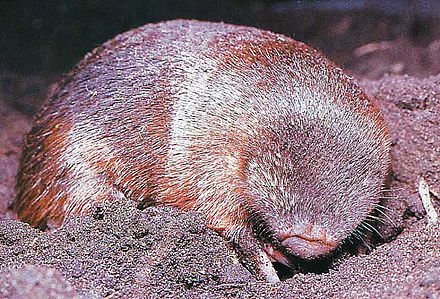The most amazing creature
"The star-nosed mole (Condylura cristata) is a small mole found in
wet low areas of eastern Canada and the northeastern United States."
The Scalopininae are divided into two tribes, five genera, and seven species:
Tribe Condylurini ---> Genus Condylura, the star-nosed mole
Tribe Scalopini
--> Genus Scalopus, the common Eastern mole
--> Genus Scapanus, three species of western moles
--> Genus Parascalops, the Hairy-tailed Mole
--> Genus Scapanulus, the Gansu Mole
The star-nosed mole
"...easily identifiable by the twenty-two pink fleshy appendages ringing its snout which is used as a touch organ with more than 25,000 minute sensory receptors, known as Eimer's organs, with which this hamster-sized mole feels its way around. "the star-nosed mole uses its keen sense of smell to hunt underwater. The mole blows between 5 and 10 bubbles per second, which it then immediately sucks back through its nostrils." With the help of its Eimer's organs, it may be perfectly poised to detect seismic wave vibrations."
"He counted roughly 25,000 Eimer's organs on these moles' nose appendages called rays. The organ consists of a minute skin papilla between a tenth and a fifth of a millimeter in diameter. At the papilla's core, a beautifully geometric constellation of nerve fibers with free endings is embedded with great symmetry in a conspicuous column of epithelial cells."
"roughly 52% of the cortex is devoted to the nose. This means that more than half of the brain is dedicated to processing sensory information acquired by this organ, even when the nose itself is only roughly the 10% of the mole’s actual size. Thus, it may be concluded that the nose substitutes for the eyes, with the information from it being processed so as to produce a tactile map of the environment under the mole’s nose."





OMG...aliens are real!!!
That is one horrible-looking creature!